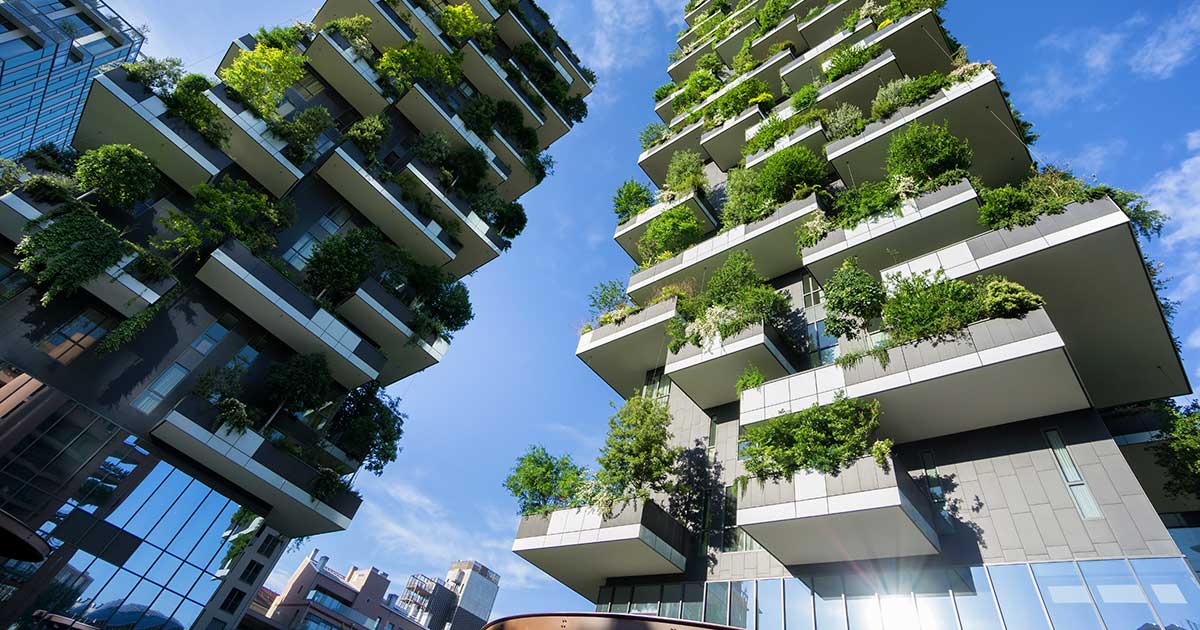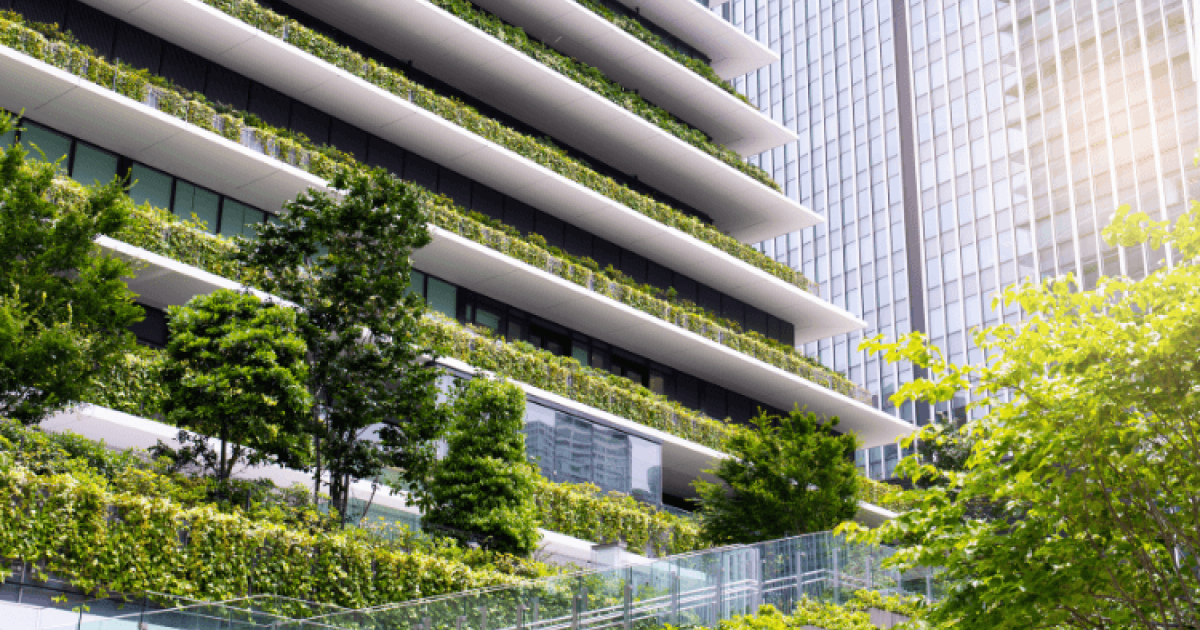Green Tech Revolution: Building a Sustainable Future
In an era defined by environmental challenges, the imperative for transformative change has never been more apparent. The contours of this chapter sketch the pressing issues our planet faces, from climate change to resource depletion. However, the spotlight here is on the beacon of hope — technology and its pivotal role in navigating towards a sustainable future.
Amidst the burgeoning environmental crisis, the need for substantial transformation resonates with urgency. This era unfolds against the backdrop of formidable challenges such as climate change and the looming specter of resource depletion. Yet, amid these daunting issues, a beacon of hope emerges in the form of technology. It assumes a pivotal role in steering humanity towards a sustainable future.
Our journey begins with an acknowledgment of the problems at hand, yet the narrative is framed with optimism. We’re not just facing challenges; we’re presented with an opportunity for innovation and a chance to redefine our relationship with the environment.
The Need for Green Technology

Traditional technologies, once hailed as harbingers of progress, now bear the weight of environmental consequences. This section meticulously unpacks the ecological footprint left by conventional methods, underscoring the urgent need for a paradigm shift towards sustainable alternatives.
The narrative seamlessly transitions into an exploration of the imperative to adopt green technologies. Urgency becomes a driving force, compelling individuals, businesses, and governments alike to embrace solutions that not only mitigate harm but actively contribute to the restoration of our planet.
Renewable Energy Solutions
Solar Power: Harnessing the Sun’s Energy
Embarking on the journey of renewable energy, we dissect the marvels of solar power. Photovoltaic cells, the unsung heroes of this green narrative, come under scrutiny. How do they transform sunlight into a potent source of energy? The answers unfold, revealing applications that extend far beyond traditional power generation.
Moving beyond basics, we delve into the latest advancements propelling solar technology into a new era. Efficiency and scalability are the keywords as we explore innovations that promise not just sustainability but a revolution in how we harness the sun’s boundless energy.
Wind Energy: Tapping into Nature’s Power
The narrative then catches the wind, exploring the intricate mechanics of wind turbines. These giants on the horizon are not just symbols; they are powerhouses tapping into nature’s kinetic energy. A closer look reveals the benefits they bring, tempered by the challenges posed by offshore wind farms.
The discussion widens, illustrating the potential of wind energy not just in reducing carbon footprints but in redefining the energy landscape. This section is a journey through the gusts of change that can power our sustainable future.
Hydroelectric Power: Sustainable Energy from Water
Water, the silent force, takes center stage as we navigate through hydroelectric power. Dams, often controversial, are laid bare for their environmental considerations. Yet, the focus shifts to the smaller scale, exploring community-driven hydro projects that prove sustainable energy can be a collective endeavor.
The chapter concludes, leaving readers with a profound appreciation for the diversity and potential of renewable energy solutions, each a thread in the fabric of a sustainable future.
Innovative Energy Storage

Batteries, the unsung heroes of a sustainable tomorrow, form the bedrock of this chapter. The exploration begins with a comprehensive look at the current state and future prospects of lithium-ion technology. From smartphones to electric vehicles, the impact of these energy storage devices is far-reaching.
Yet, the narrative doesn’t linger in the present; it propels forward, shedding light on emerging technologies. Solid-state and flow batteries, once confined to the realm of innovation, emerge as transformative players poised to reshape our energy storage landscape. The quest for sustainability isn’t just about generating power; it’s about storing it intelligently for a greener tomorrow.
Smart Grids: Revolutionizing Energy Distribution
Traditional power grids, with their inherent limitations, set the stage for a revolutionary evolution in energy distribution — smart grids. This chapter unfolds with an overview of the challenges posed by traditional grids and how the integration of smart grid technology is poised to enhance efficiency and reliability.
A deep dive into the world of smart grids reveals not just the technical intricacies but the societal implications of this technological advancement. It’s not just about distributing energy; it’s about doing so intelligently, weaving a narrative where sustainability and efficiency coalesce.
Green Buildings and Urban Planning
Sustainable Architecture: Designing for Efficiency
As we transition into the realm of construction, the spotlight shifts to sustainable architecture. The discussion revolves around passive design principles — an exploration of how buildings can be designed to optimize natural resources. From utilizing sunlight strategically to harnessing natural ventilation, sustainable architecture emerges as a blueprint for efficiency.
But the conversation doesn’t stop at the exterior; it ascends to new heights — quite literally. Green roofs and walls, once aesthetic embellishments, are unmasked for their multifaceted benefits. They aren’t just about aesthetics; they are about creating urban environments that breathe and thrive sustainably.
Eco-Friendly Materials: Building with a Purpose
The narrative takes a tactile turn, delving into the materials that shape our structures. Recycled materials take center stage, not just as a token nod to sustainability but as active contributors to reducing environmental impact. From discarded plastics to repurposed metals, the materials we use become a conscious choice in building a sustainable future.
The exploration widens to include innovative materials — bamboo, hemp, and other alternatives — each with its unique story and potential to redefine the construction landscape. This chapter is a testament to the fact that sustainability isn’t just about how we build; it’s about what we build with.
Transportation Revolution

Electric Vehicles: Driving Towards a Greener Future
The hum of engines transforms into a whisper as we venture into the realm of electric vehicles. The advantages unfold — not just environmental, but economic. The discussion doesn’t shy away from the challenges, particularly the infrastructural hurdles that electric cars face. Yet, each challenge becomes a call to action, a roadmap to a greener future on wheels.
Public Transportation: Rethinking Commuting
Public transportation becomes the stage for the next act in the transportation revolution. High-speed rail and sustainable mass transit are not just alternatives; they are pillars of change. Technological integration becomes the linchpin, ushering in a vision of public transportation that is not just efficient but seamlessly connected.
The chapter concludes with a vision of a transformed transportation landscape — one where electric vehicles and sustainable mass transit aren’t outliers but the norm.
Circular Economy: Reducing Waste, Maximizing Resources
Cradle-to-Cradle Design: A Paradigm Shift
A paradigm shift unfolds as we dive into the concept of cradle-to-cradle design. It’s not just about reducing waste; it’s about reimagining the entire life cycle of products. The narrative dissects the traditional linear economy and introduces a circular revolution where every product is designed with recycling in mind.
This philosophy takes form as we explore case studies — success stories that exemplify the transition from a throwaway culture to a circular economy. The chapter is a journey through not just waste reduction but resource maximization — a blueprint for a sustainable and regenerative future.
Designing products with recycling in mind
The conversation deepens, focusing on the intricate process of designing products with recycling at the forefront. It’s not just about the end of life; it’s about planning for the rebirth of materials into new iterations. The chapter illuminates the design thinking required to make this shift, emphasizing that sustainability begins at the drawing board.
Tech Innovations for Environmental Monitoring

IoT and Environmental Sensing: Tracking and Analyzing Data
The synergy between technology and environmental monitoring takes center stage. IoT and environmental sensing emerge as dynamic tools, tracking and analyzing data to provide a comprehensive understanding of our surroundings. The narrative is a journey through the interconnected web of sensors that redefine how we perceive and interact with our environment.
Sensors for air and water quality monitoring
Zooming in, we focus on the unsung heroes — sensors that monitor air and water quality. The technology behind these devices is demystified, and the narrative expands to showcase how these sensors, often inconspicuous, wield immense power in shaping environmental policies and individual choices.
Data analytics: Making sense of environmental data
The data amassed by environmental sensors isn’t just a collection of numbers; it’s a story waiting to be told. This section unfolds the role of data analytics in deciphering complex patterns and trends. It’s not just about data; it’s about making sense of it, transforming raw information into actionable insights for a sustainable future.
Policy and Advocacy for a Sustainable Future
Government Initiatives: Shaping a Green Policy Landscape
Governments wield considerable influence in steering the ship towards sustainability. This chapter unfurls the tapestry of government initiatives, from shaping a green policy landscape to offering incentives for green technology adoption. It’s a journey through the intersection of governance and environmental stewardship.
The narrative widens to explore the intricate dance between regulatory frameworks and sustainability. It’s not just about policies on paper; it’s about creating an environment where sustainability isn’t a choice but a collective responsibility.
Educating for Tomorrow

The Role of Education in Sustainability
The spotlight shifts to education as a catalyst for change. This chapter explores how integrating green technology into educational curricula fosters environmental awareness from an early age. It’s not just about textbooks; it’s about cultivating a mindset where sustainability becomes an integral part of the learning journey.
The narrative unfolds in the classrooms of the future, where sustainability isn’t a niche subject but an overarching theme that permeates every discipline. Fostering environmental awareness becomes a mission, shaping a generation that views sustainability as second nature.
Challenges and Opportunities
As we navigate the green tech revolution, the road isn’t always smooth. This chapter confronts the obstacles head-on, from economic challenges to the considerations of cost in adopting green technologies. Yet, within every challenge lies an opportunity, and the narrative is a call to embrace both.
The global stage becomes the canvas, and the necessity for collaboration becomes apparent. It’s not just about individual efforts; it’s about a collective endeavor towards a sustainable future. This chapter is a reflection on the hurdles and the pathways that can lead us to a brighter and more sustainable tomorrow.
Conclusion
The final chapter is a tapestry woven from the threads of optimism and opportunity. It’s a recap of the transformative potential inherent in green technology, a reminder that the journey may be challenging, but the destination promises a future that is not just green but also sustainable in every sense of the word. Encouragement resonates through every word, urging individuals and businesses alike to embrace sustainability as not just a choice but a responsibility. The green tech revolution isn’t just a possibility; it’s a necessity, and the concluding words echo the sentiment that the future is not just sustainable but waiting to be shaped by our collective actions.
FAQ – “Green Tech Revolution: Building a Sustainable Future”
What is the main focus of the blog post “Green Tech Revolution: Building a Sustainable Future”?
The blog post delves into the various aspects of the Green Tech Revolution, exploring topics such as renewable energy solutions, innovative energy storage, smart grids, green buildings, transportation revolution, circular economy, tech innovations for environmental monitoring, policy and advocacy, education for sustainability, and challenges and opportunities in building a more sustainable future.
Why is technology highlighted in the context of building a sustainable future?
Technology is seen as a key driver in addressing environmental challenges. The blog post emphasizes how advancements in technology, particularly green technology, play a crucial role in mitigating environmental impact and steering us towards a more sustainable future.
What are some of the key renewable energy solutions discussed in the blog post?
The post covers solar power, wind energy, and hydroelectric power. Each of these sections delves into the mechanics, applications, and environmental considerations of these renewable energy sources.
How does the blog post address energy storage in the context of sustainability?
The post explores innovative energy storage solutions, focusing on batteries for a sustainable future. It delves into the current state and future prospects of lithium-ion technology and introduces emerging technologies like solid-state and flow batteries.
What is the significance of smart grids in revolutionizing energy distribution?
The blog post highlights the limitations of traditional power grids and introduces smart grids as a revolutionary solution. It discusses how smart grid technology enhances efficiency and reliability in energy distribution.
How does the post approach sustainable architecture and urban planning?
The blog post covers sustainable architecture, emphasizing passive design principles and the benefits of green roofs and walls for urban environments. It also explores eco-friendly materials, including recycled materials and innovative alternatives like bamboo and hemp.
How is transportation addressed in the context of sustainability?
The post discusses the transportation revolution, focusing on electric vehicles, their environmental and economic advantages, and the infrastructure challenges they face. It also explores the rethinking of public transportation, including high-speed rail and sustainable mass transit.
What is the circular economy, and how is it discussed in the blog post?
The circular economy is introduced as a paradigm shift, and the post explains cradle-to-cradle design, emphasizing designing products with recycling in mind. It also includes case studies illustrating successful circular economy models.
How does the blog post explore the role of technology in environmental monitoring?
The post discusses tech innovations for environmental monitoring, including IoT and environmental sensing. It covers sensors for air and water quality monitoring and the role of data analytics in making sense of environmental data.
What is the emphasis on policy, advocacy, and education for a sustainable future?
The blog post addresses government initiatives shaping a green policy landscape, incentives for green technology adoption, and regulatory frameworks supporting sustainability. It also explores the role of education in sustainability, emphasizing the integration of green technology into educational curricula.
How does the post conclude and what is the message for readers?
The post concludes by recapping the transformative potential of green technology and encourages individuals and businesses to embrace sustainability as a responsibility. It emphasizes that while the journey may be challenging, the destination promises a future that is not just green but also sustainable in every sense.
Stay Tuned On Our Content
In our exploration of the Green Tech Revolution, we’ve dedicated an entire section to the fascinating world of renewable energy. If you’re eager to dive deeper into the details of how renewable energy technologies are powering the world responsibly, you won’t want to miss our comprehensive guide on Renewable Energy Tech: Powering the World Responsibly. This insightful piece on AmazingXJobs provides an in-depth look at the latest advancements and applications of renewable energy, complementing our own exploration of sustainable solutions.
For a broader perspective on the Green Tech Revolution and building a sustainable future, check out the thought-provoking article titled Building a Sustainable Future: The GreenTech Revolution on Medium. Authored by experts in the field, this piece delves into various aspects of the green technology landscape, offering insights and perspectives that complement our own discussion. Exploring external viewpoints is crucial for a holistic understanding of the transformative potential that green technology holds for our planet.



